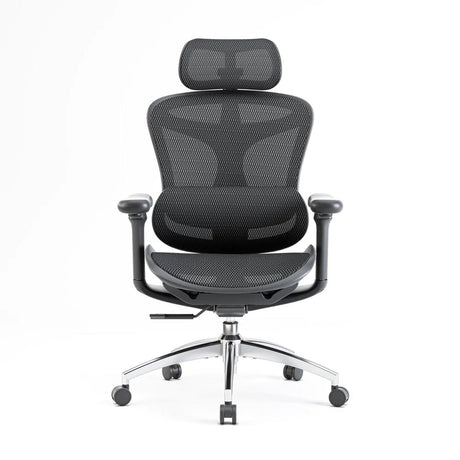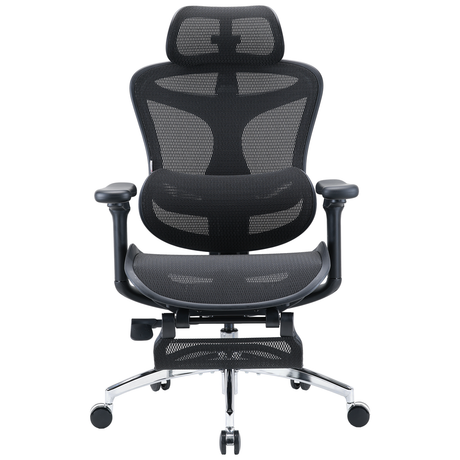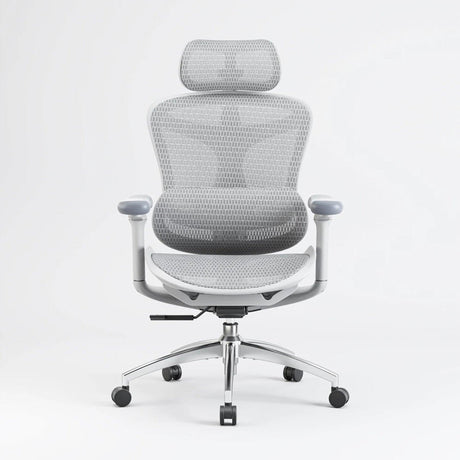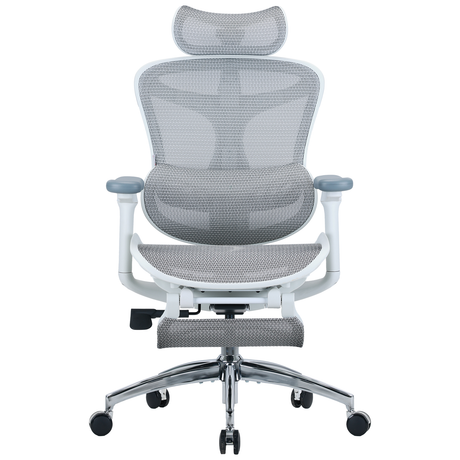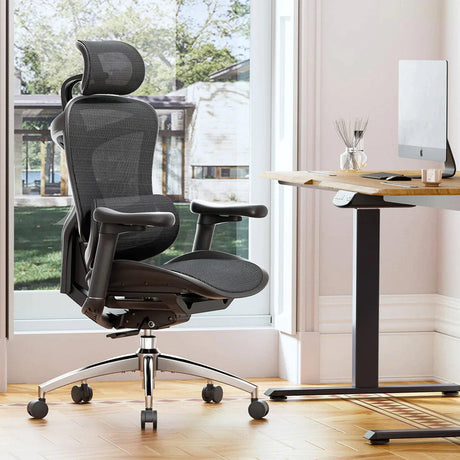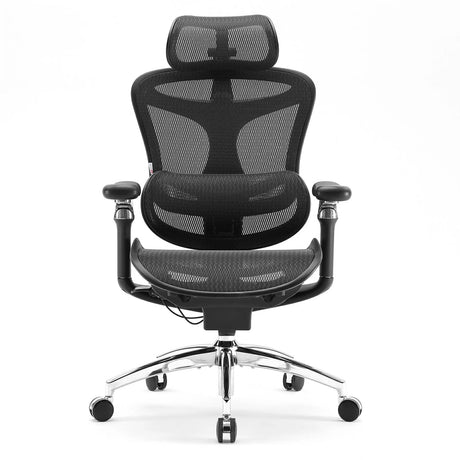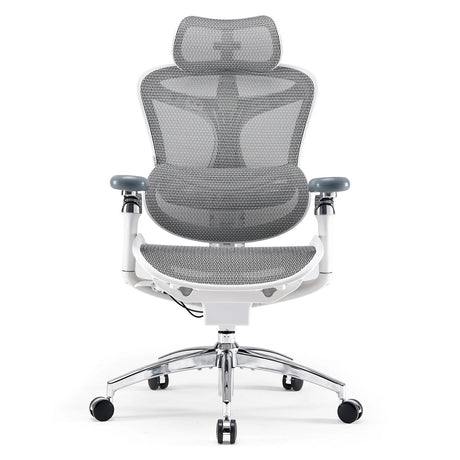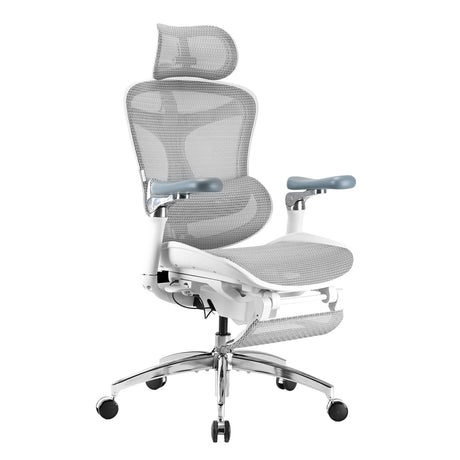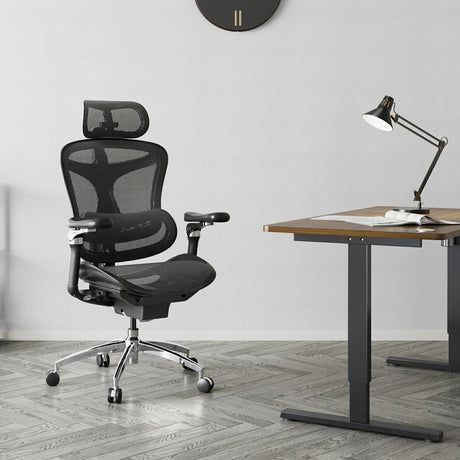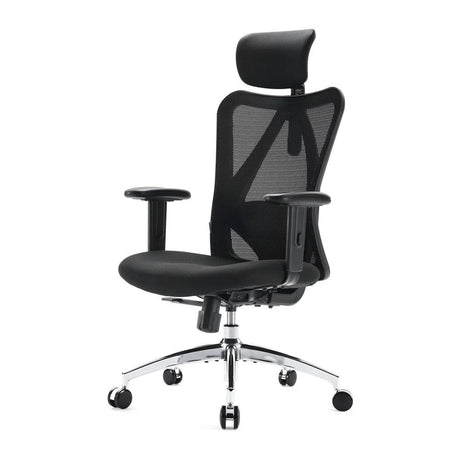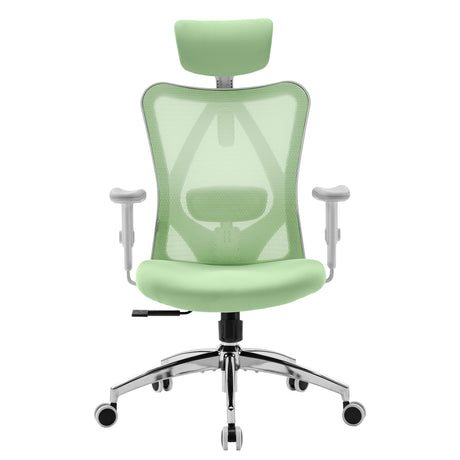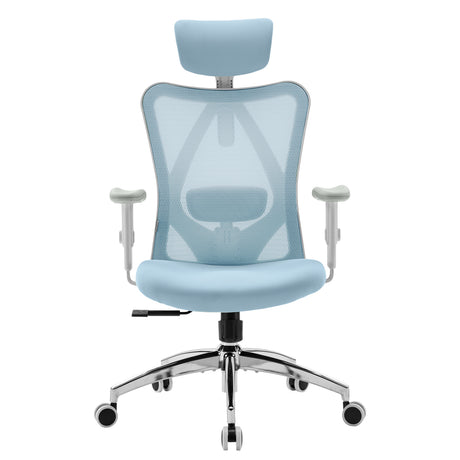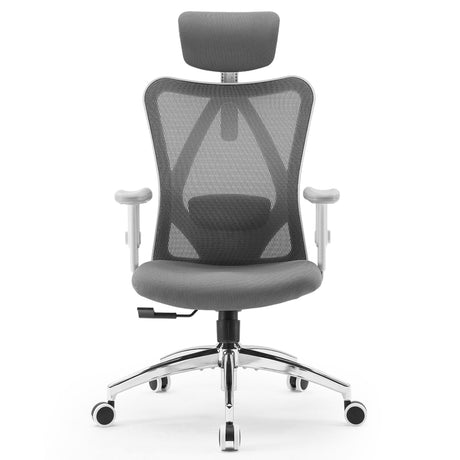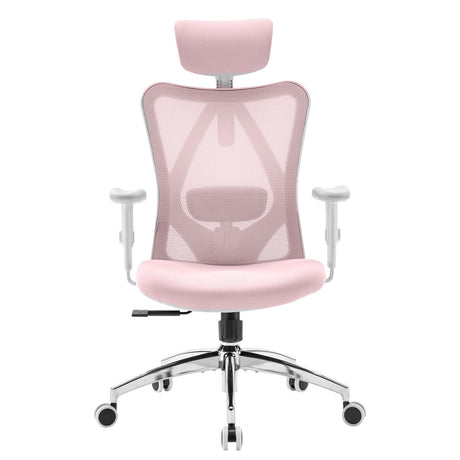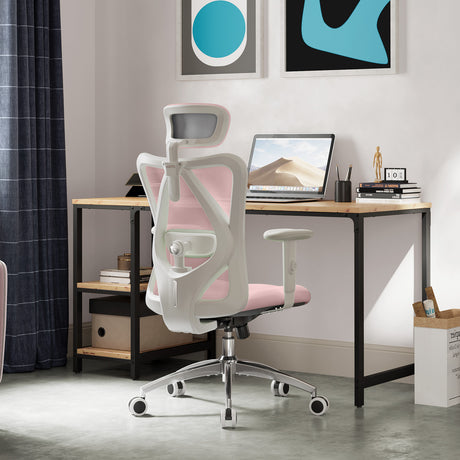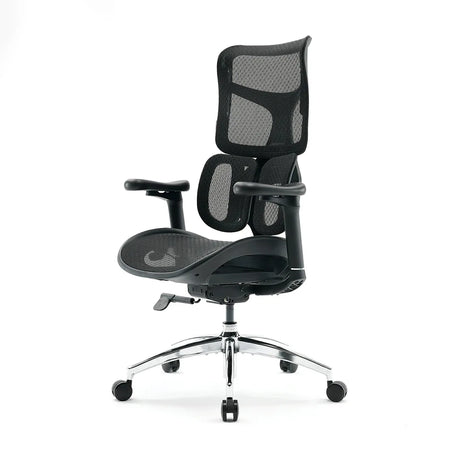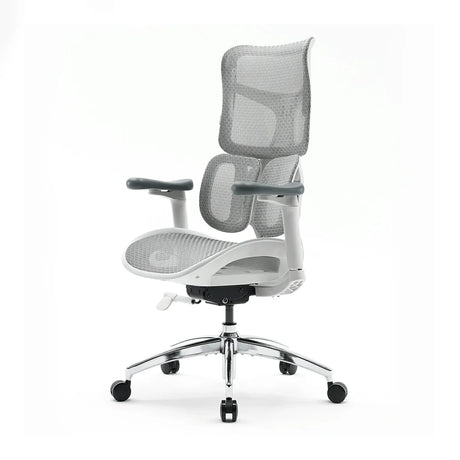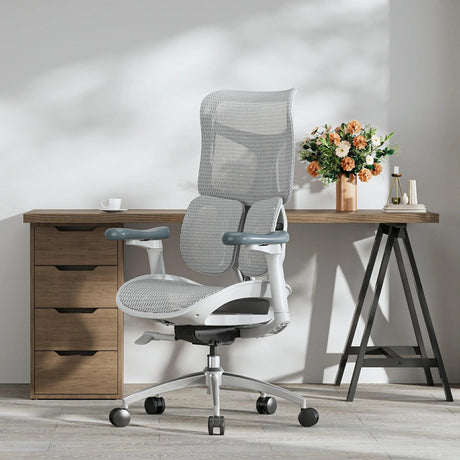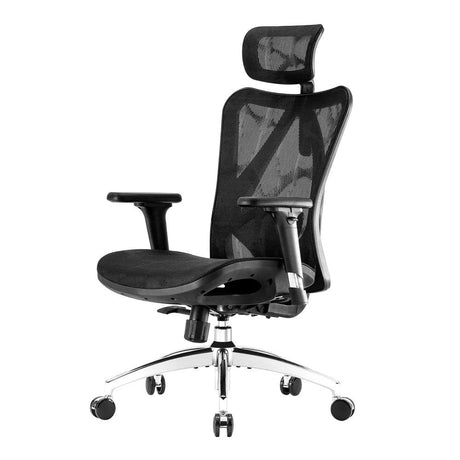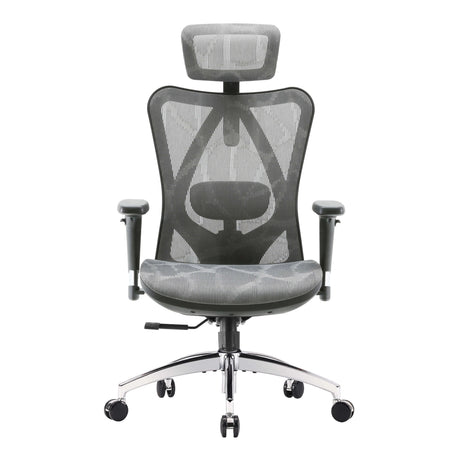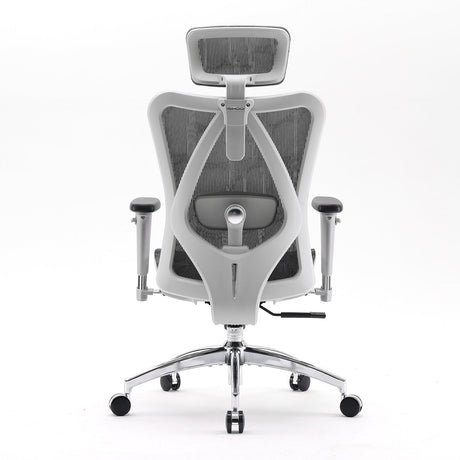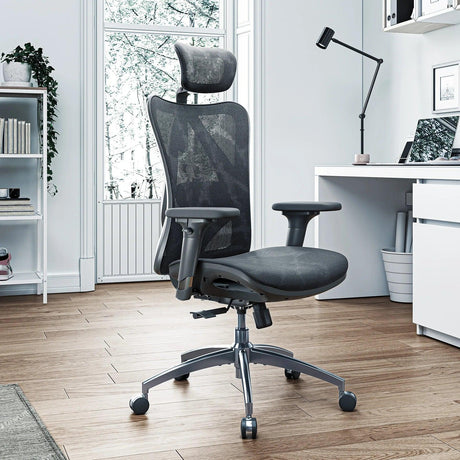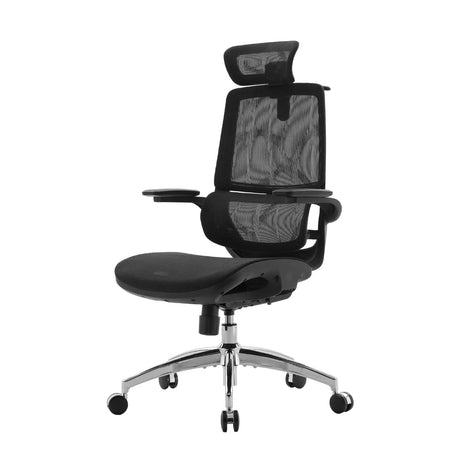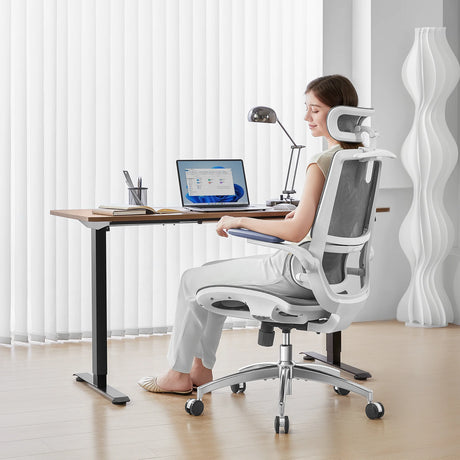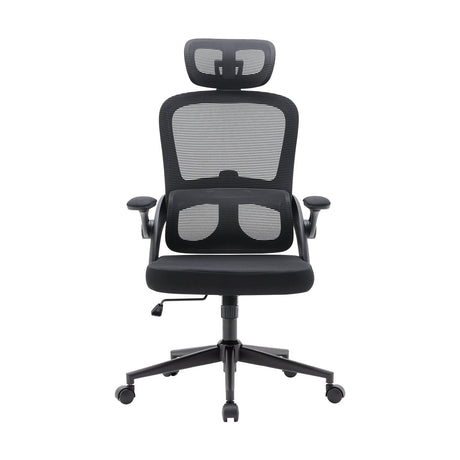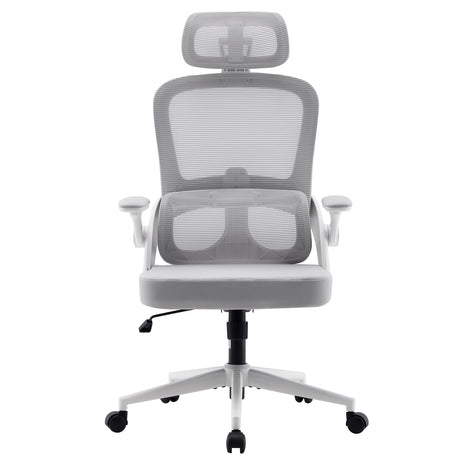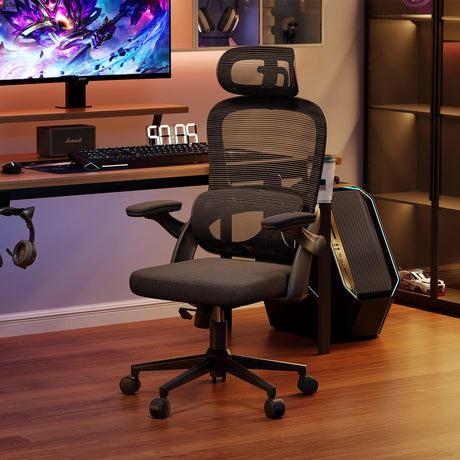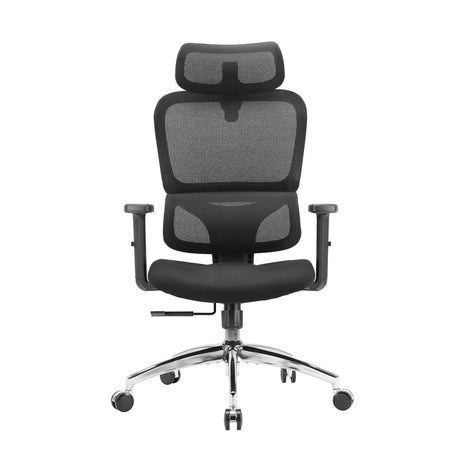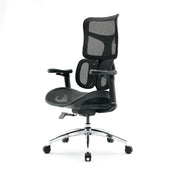A slippery office chair might seem like a minor inconvenience, but anyone who has dealt with one knows how disruptive—and sometimes unsafe—it can be. Whether you find yourself sliding forward, shifting uncontrollably every time you sit, or slipping off the seat entirely, a slippery chair undermines comfort, posture, productivity, and overall ergonomic support.
The good news? A slippery office chair is almost always fixable with proper cleaning, maintenance, and small adjustments to materials and surfaces. This comprehensive guide walks you through why office chairs become slippery, how to clean every type of chair material, how to improve grip and stability, and when it may be time to upgrade to a more ergonomic solution—especially if you spend long hours working, studying, or gaming.
This in-depth guide is written with ergonomics-focused homeowners, remote workers, and professionals in mind. Using the same calm, expert tone often associated with premium ergonomic brands like Sihoo, it provides actionable solutions without promoting any single product.
1. Introduction: Why Slipperiness Matters More Than You Think
A slippery office chair is more than a nuisance—it actively interferes with posture, concentration, and musculoskeletal health. Office chairs are designed to hold you in a stable seated position that promotes proper spinal alignment, weight distribution, and pelvic anchoring. When the seating area becomes slick or the backrest loses friction, your body compensates in ways that strain your lower back, core muscles, hip joints, and shoulders.
If you’ve ever experienced:
- sliding forward when reclining
- slipping off the edge of the seat
- constantly readjusting your posture
- losing lumbar support because you cannot stay anchored
…then the core problem is often a surface that has lost its natural grip due to dirt, oils, residue, wear, or material breakdown.
Fortunately, proper cleaning can restore a surprising amount of traction, prolonging the chair’s life and making it comfortable again. This guide walks you through everything you need to know to restore grip safely and effectively.
2. Common Reasons Office Chairs Become Slippery
Before cleaning a chair, identifying why it has become slippery helps you choose the right method and avoid damaging the materials.
2.1. Accumulated Body Oils and Sweat
Human skin naturally produces oils. Over time, these oils soak into fabrics and coat leather, mesh, or PU surfaces. Body oils act like a lubricant, making the seat feel smooth and slick.
2.2. Cleaning Product Buildup
Using the wrong cleaning product can leave residue behind. This is especially common with:
- furniture polish
- silicone-based sprays
- wax conditioners
- multipurpose cleaners designed for wood
Instead of cleaning, these products leave a shiny slick film.
2.3. Dust + Oil Combination
Dust alone is not slippery—but when oils and debris mix, they form a fine film similar to soft wax. This creates more sliding than either material alone.
2.4. Fabric Compression and Wear
Older fabrics become smoother as fibers compress. Worn mesh or heavily polished leather also loses texture.
2.5. Sweat and Moisture Saturation
Moisture from sweat or humidity smooths out natural friction and accelerates fabric breakdown.
2.6. Material Breakdown
PU leather eventually flakes or becomes glossy as the polyurethane coating wears down. The glossy phase is often slippery.
2.7. Incorrect Cleaning Practices
For example:
- rubbing leather with oils
- soaking mesh with water
- using dish soap directly on foam cushions
- applying wax to a matte-finish material
These mistakes worsen the problem over time.
3. How to Clean a Slippery Office Chair (By Material)
Different chair materials require different cleaning approaches. Using the wrong method can make the chair more slippery instead of solving the issue.
Below are detailed, professional cleaning techniques for each common material.
3.1. Cleaning a Slippery Fabric Office Chair
Fabric chairs are the most common and often the quickest to become slippery due to oils, dust, and sweat absorption.
Step-by-Step Cleaning
1. Vacuum thoroughly
Use a brush attachment to remove dirt, fibers, and dust.
2. Mix a mild cleaning solution
- 1 tablespoon of mild laundry detergent
- 1 liter of warm water
- Optional: ½ cup of white vinegar to break down oils
3. Spot test
Always test for colorfastness.
4. Scrub gently
Use a soft brush in circular motions. Pay extra attention to:
- seat edges
- lumbar area
- backrest areas that make skin contact
5. Rinse with a damp microfiber cloth
Avoid soaking the foam base.
6. Let the chair dry completely
Air-dry only. Do not use heat.
Why Fabric Gets Slippery
When oils saturate fibers, they create a slick surface. Thorough cleaning restores the natural friction of the textile.
3.2. Cleaning a Slippery Mesh Office Chair
Mesh chairs are popular for breathability, but their tiny holes collect oils and dust.
Safe Mesh Cleaning Method
1. Vacuum the mesh
Use gentle suction to avoid stretching.
2. Prepare a cleaning solution
- Warm water
- Mild dish soap or gentle fabric detergent
3. Use a soft brush or sponge
Avoid hard brushes that can fray mesh fibers.
4. Rinse lightly
Dampen a cloth and wipe away soapy residue.
5. Air-dry
Mesh dries quickly and should never be heated.
Why Mesh Chairs Become Slippery
Oil buildup creates a glossy surface and reduces grip. Mesh tension also changes, causing sliding or slipping forward. Cleaning restores the matte texture.
3.3. Cleaning Genuine Leather (Slippery Leather Seat or Backrest)
Genuine leather becomes slippery when coated with:
- oils
- sweat
- moisturizing creams
- leather conditioners
- silicone sprays
Correct Leather Cleaning Method
1. Use a leather-specific cleaner
Avoid generic sprays.
2. Apply with a microfiber cloth
Use circular motions and gentle pressure.
3. Remove all residue
A second clean, dry cloth removes excess.
4. Apply a matte-finish leather conditioner if necessary
Avoid glossy conditioners—they will worsen slipperiness.
5. Let leather breathe
Air-dry in indirect sunlight.
Common Mistake
People often over-condition leather, which leaves a high-shine slippery finish.
3.4. Cleaning PU Leather or Faux Leather
PU leather is more sensitive to heat, chemicals, and abrasion. Slipperiness usually comes from:
- gloss wear
- hand oils
- silicone sprays
- plasticizers migrating from the material over time
Proper PU Cleaning
1. Wipe with warm water + dish soap
Avoid alcohol—it accelerates breakdown.
2. Use a soft-bristled brush for texture restoration
PU becomes more textured when lightly brushed.
3. Rinse with a damp cloth
Remove all soap.
4. Apply a matte PU-safe conditioner if desired
Do not use real leather conditioners.
3.5. Cleaning Vinyl Chairs
Vinyl becomes slippery when coated with dust and oils. It is one of the easiest materials to clean.
Vinyl Cleaning Steps
1. Wipe with a microfiber cloth
2. Use mild soap + warm water
3. Rinse well
4. Avoid petroleum-based cleaners (they add shine)
Optional Step: Add Texture
A soft nylon brush can restore grip on certain vinyl finishes.
3.6. Cleaning Hard Plastic or Polypropylene Chairs
Plastic becomes slippery due to fingerprints, body oils, or cleaning-product residue.
Cleaning Process
1. Wipe with diluted dish soap
2. Rinse thoroughly
3. Avoid furniture polish
It leaves a wax-like slippery surface.
4. Deep Cleaning Methods for Restoring Grip
Sometimes regular cleaning isn’t enough. Below are professional-grade methods that remove deeply embedded residue.
4.1. Steam Cleaning (Fabric & Mesh Only)
Steam:
- dissolves oils
- lifts embedded dirt
- restores texture
Keep steam light and avoid prolonged exposure.
4.2. Enzyme Cleaners (Fabric Only)
Enzyme cleaners break down organic oils and sweat. They must be rinsed thoroughly to avoid residue.
4.3. Alcohol Wipes (Mesh & Plastic Only)
Avoid for:
- PU leather
- vinyl
- genuine leather
Alcohol strips oils effectively but must be used sparingly on mesh frames and plastics.
4.4. Degreasing Agents (Very Diluted)
Only for extremely slippery, filthy chairs.
Use:
- diluted dish soap
- diluted vinegar
Never use harsh degreasers on leather or PU.
5. How to Remove Body Oils, Residue, and Wax Buildup
This is the primary cause of slipperiness. The most effective approach:
- Start with mild cleaning
- Use a surfactant (soap) to break down oils
- Avoid scented products that leave residue
- Dry thoroughly
- Restore texture with a brush if needed
6. How to Make a Chair Less Slippery Without Replacing It
Even after cleaning, some chairs remain slick. Here are practical solutions.
6.1. Add a Non-Slip Seat Cover
Choose:
- breathable mesh
- textured fabric
- anti-slip rubberized backing
Avoid vinyl covers—they can worsen the problem.
6.2. Replace the Seat Cushion
A firmer cushion with a breathable textile cover improves grip significantly.
6.3. Adjust Seat Angle
A forward-tilting seat increases sliding; adjusting the chair to a neutral or slightly backward tilt reduces slipperiness.
6.4. Add Grip Tape (Hard Chairs Only)
For plastic or wooden chairs, textured grip tape can be applied temporarily.
6.5. Improve Posture Using Ergonomic Adjustments
Slipping is often amplified by poor body position. Increase:
- seat depth
- lumbar support
- recline tension
- armrest height
These stabilize your pelvis and reduce sliding.
7. When Slipperiness Indicates a Bigger Problem
Slipperiness might signal:
- material aging
- cushion collapse
- mesh tension loss
- PU peeling
- structural frame issues
In such cases, cleaning will only temporarily mask the problem.
8. Preventive Maintenance for Long-Term Grip
8.1. Clean Monthly
A light monthly clean prevents oils from accumulating.
8.2. Avoid Lotions or Oils Before Sitting
Lotions transfer directly to chair material.
8.3. Use Breathable Clothing
Synthetic fabrics deposit more oils.
8.4. Keep the Room Well-Ventilated
Humidity encourages slick buildup.
9. Ergonomic Considerations: Slipperiness and Posture
A slippery chair:
- reduces lumbar support effectiveness
- increases pelvic tilt
- encourages slouching
- strains the lower back
- disrupts prolonged sitting stability
People with pre-existing issues—ADHD, chronic pain, sciatica—may find slipperiness even more problematic because they rely more heavily on consistent support and tactile feedback.
10. When It’s Time to Replace Your Office Chair
Cleaning may not solve the issue if:
- PU leather is cracking
- mesh tension is permanently stretched
- foam cushion has collapsed
- the seat pan is warped
- your back pain worsens despite cleaning
If your chair is more than 8–10 years old, slipperiness may be one sign among many that it has reached the end of its life cycle.
11. Frequently Asked Questions (FAQs)
1. Why does my office chair feel slippery even after cleaning?
Residue from cleaning products—especially silicone, wax, or conditioner—may still remain. Another possibility is material wear that cannot be repaired.
2. Can fabric chairs become permanently slippery?
Yes. When fibers compress beyond a certain point or oil saturation is severe, the fabric becomes smooth. A seat cushion replacement may be necessary.
3. Why is my mesh chair slippery?
Mesh collects oils from skin and clothing, especially in warm climates. Deep cleaning usually restores grip.
4. Is vinegar safe for cleaning office chairs?
Yes, but only on fabric and mesh. Do not use vinegar on leather or PU leather.
5. Can I use alcohol wipes on my office chair?
Only on plastic or mesh frames—not on leather, PU leather, or vinyl.
6. How often should I clean my office chair to prevent slipperiness?
A light cleaning every month is ideal, with deeper cleaning every 3–6 months.
7. How do I know if the chair needs to be replaced?
If slipperiness comes from structural issues or extreme material degradation, cleaning will not fix it.


